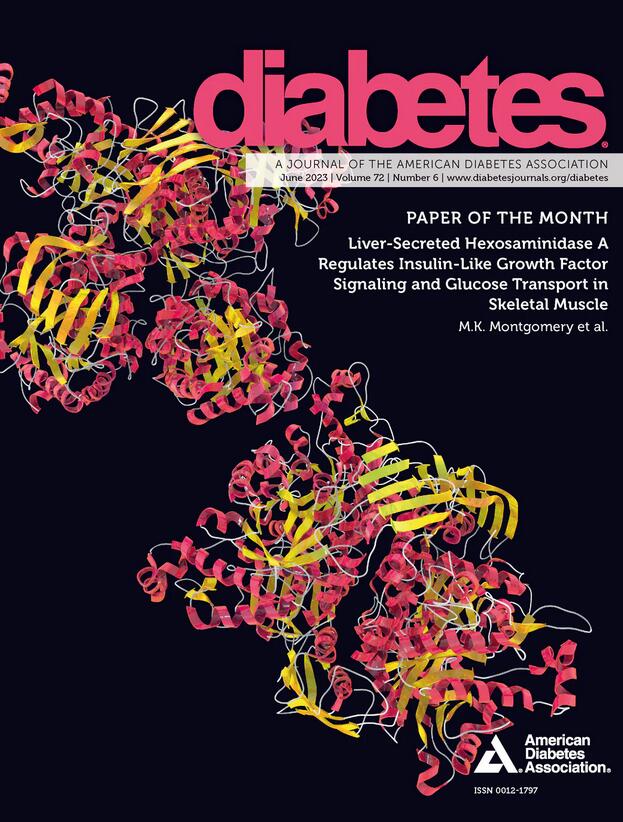Application of Dental Pulp Stem Cell–Derived Intracellular Vesicles for Diabetic Wound Healing
IF 7.5
1区 医学
Q1 ENDOCRINOLOGY & METABOLISM
引用次数: 0
Abstract
Diabetic wounds represent a significant clinical and economic burden, affecting both patients and health care systems. While current therapeutic approaches, such as negative pressure wound therapy, offer benefits, their limitations necessitate alternative strategies. Newly discovered dental pulp stem cell–derived intracellular vesicles have emerged as a promising candidate in regenerative medicine due to their therapeutic potential. In vitro assessments using HUVECs, HaCaTs, and RAW264.7 cells revealed that intracellular vesicles enhance cell migration, angiogenesis, and proliferation while suppressing the cGAS-STING pathway. Additionally, intracellular vesicles promoted M2 macrophage polarization and maintained mitochondrial function. In a diabetic mouse wound model, both intracellular vesicles and negative pressure wound therapy individually improved wound healing, but their combination exhibited a synergistic effect, resulting in faster wound closure, enhanced angiogenesis, and reduced inflammation. The combined treatment also exhibited excellent biocompatibility. These findings highlight the therapeutic potential of intracellular vesicles as an adjunct to negative pressure wound therapy for diabetic wound treatment. Article Highlights Chronic diabetic wounds are difficult to heal, and current treatments, such as negative pressure wound therapy, have limited effectiveness. The potential of intracellular vesicles derived from dental pulp stem cell lysate for diabetic wound healing is well worth exploring. Intracellular vesicles promoted angiogenesis, cell proliferation, and M2 macrophage polarization by inhibiting cGAS-STING signaling and restoring mitochondrial function. Combined with negative pressure wound therapy, intracellular vesicles accelerated wound healing in diabetic mice. Intracellular vesicles offer a promising cell-free strategy to enhance negative pressure wound therapy outcomes and improve diabetic wound treatment.牙髓干细胞源性细胞内囊泡在糖尿病创面愈合中的应用
糖尿病性伤口是一个重大的临床和经济负担,影响患者和卫生保健系统。虽然目前的治疗方法,如负压伤口治疗,提供了好处,但其局限性需要替代策略。新发现的牙髓干细胞来源的细胞内囊泡因其治疗潜力而成为再生医学的一个有前途的候选物。使用HUVECs、HaCaTs和RAW264.7细胞进行的体外评估显示,细胞内囊泡增强细胞迁移、血管生成和增殖,同时抑制cGAS-STING途径。细胞内囊泡促进M2巨噬细胞极化,维持线粒体功能。在糖尿病小鼠伤口模型中,细胞内囊泡和负压伤口治疗都能促进伤口愈合,但它们的组合表现出协同效应,导致伤口愈合更快,血管生成增强,炎症减少。联合处理也表现出良好的生物相容性。这些发现强调了细胞内囊泡作为负压伤口治疗糖尿病伤口的辅助治疗潜力。慢性糖尿病伤口难以愈合,目前的治疗方法,如负压伤口治疗,效果有限。从牙髓干细胞裂解液中提取的细胞内囊泡在糖尿病伤口愈合中的潜力值得探索。细胞内囊泡通过抑制cGAS-STING信号和恢复线粒体功能,促进血管生成、细胞增殖和M2巨噬细胞极化。结合负压创面治疗,细胞内囊泡加速糖尿病小鼠创面愈合。细胞内囊泡为提高负压伤口治疗效果和改善糖尿病伤口治疗提供了一种有前途的无细胞策略。
本文章由计算机程序翻译,如有差异,请以英文原文为准。
求助全文
约1分钟内获得全文
求助全文
来源期刊

Diabetes
医学-内分泌学与代谢
CiteScore
12.50
自引率
2.60%
发文量
1968
审稿时长
1 months
期刊介绍:
Diabetes is a scientific journal that publishes original research exploring the physiological and pathophysiological aspects of diabetes mellitus. We encourage submissions of manuscripts pertaining to laboratory, animal, or human research, covering a wide range of topics. Our primary focus is on investigative reports investigating various aspects such as the development and progression of diabetes, along with its associated complications. We also welcome studies delving into normal and pathological pancreatic islet function and intermediary metabolism, as well as exploring the mechanisms of drug and hormone action from a pharmacological perspective. Additionally, we encourage submissions that delve into the biochemical and molecular aspects of both normal and abnormal biological processes.
However, it is important to note that we do not publish studies relating to diabetes education or the application of accepted therapeutic and diagnostic approaches to patients with diabetes mellitus. Our aim is to provide a platform for research that contributes to advancing our understanding of the underlying mechanisms and processes of diabetes.
 求助内容:
求助内容: 应助结果提醒方式:
应助结果提醒方式:


